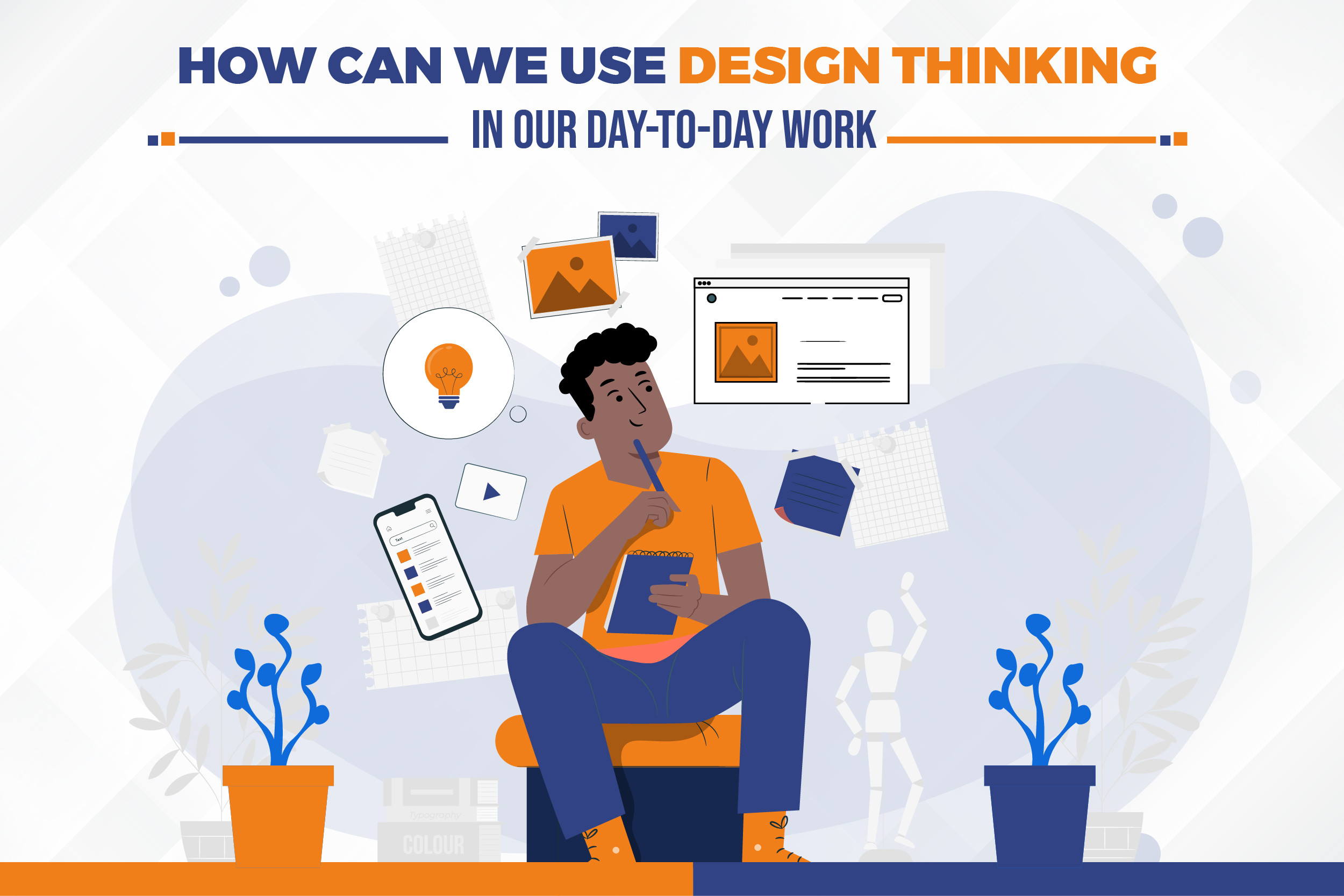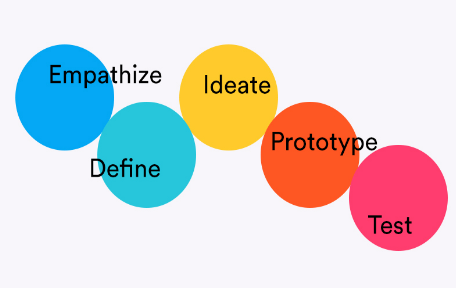
How Can We Use Design Thinking In Our Day-To-Day Work?
Design thinking is about solving problems by identifying challenges, generating ideas, and testing them with customers. The goal of design thinking is to create new solutions for old problems and find solutions that are both innovative and viable. Design Thinking is becoming a household term in the corporate and creative worlds.
It is a comparatively recent idea that focuses on addressing the hidden aspects while resolving complicated problems. The key to this topic is to examine people's feelings (empathize) and develop numerous, comprehensive, inclusive solutions. In short, design thinking is a method of problem-solving that blends systematic reasoning, intuition, and logic to create long-lasting solutions.
Ways To Apply Design Thinking In Our Everyday Life
Everyone can learn to understand design thinking as it is not simply a method for designers. Here are 5 easy-to-follow suggestions for applying design thinking in your daily life to get you started on the road to improving your problem-solving abilities:
1. Envision Your Concern
The visualization shows important themes and patterns, whether you're working on micro-level initiatives or solving pressing global issues. You can locate each moving item and make complex connections between them with the aid of Venn diagrams, flow charts, and graphs. Creative minds that can spot patterns are better able to grasp subtleties in trends and stats.
2. Challenge Typical Presumptions
This "question everything" attitude enables you to dismantle cultural conventions and presumptions in order to start coming up with unconventional ideas. Consider yourself a city planner attempting to add more trees to an urban environment. Usually, you may say something like: There are a lot of buildings and not sufficient space for trees to grow. You'll instead pose a question like, "What if we could find a method to grow trees on top of buildings?” Therefore, by challenging presumptions you are actually moving ahead toward a creative answer removing the obstacles that are holding you back. Employee development programs, such as constructive Leadership Training not only develop leadership abilities but also sharpen employees and provides them with the ability to come up with unique solutions to issues.
3. Alter The Way You Think
Instead of being disheartened by significant obstacles, consider your issue from the other direction. To do this, one must change a negative phrase into a positive one and the other way around.
For instance, suppose your primary marketing goal is to raise brand recognition among your target market's millennials. Then rather than pondering how to appeal to your target market you could think otherwise and wonder, "How can I make sure my target demographic never hears about my brand?" The solution may be to never run social media marketing efforts or to never gather market data to determine what's hot. Reversing the circumstance allows you to view issues differently and choose what to prioritize. Again Transformational Leadership training programs can be instrumental to impart these abilities to individuals.
4. Develop Empathy For Your Customers
What wider purpose does my design fulfill or what would be my best value proposition?- This is a common question that designers ask themselves. You may ask this question regardless of whether your scenario involves employees, supervisors, friends, or even relatives. Start by asking straightforward questions like Who else is affected by this issue? How do they feel about it? What can you possibly do to lessen their pain? Your approach to issue resolution will be more effective if you can relate to your own audience. As a result, you commit yourself more dedicatedly to finding a lasting, significant answer.
5. Accept Failure and Risk
One key factor that makes designers masters of inventive thinking is that they are at ease with failure and danger. In order to successfully apply design thinking in your everyday life, you must get over your anxiety about failing. Only when you acknowledge (and even welcome) the risk of failure can you come up with really innovative concepts and remedies.

5 Ways To Implement Design Thinking In Your Daily Life
Thinking Out-of-the-box Can Work Wonders
Problems have a significant role in our development as individuals. Few of us, though, genuinely make an attempt to address the underlying causes of those issues. The typical approach entails finding a short cure, only to have the issue return to haunt us later.
So how can this be addressed? The design thinking concept holds the secret to it. Designers at Apple, Nike, and yes, even Google, have used this way of thinking to produce iconic products.
Recognizing and comprehending the problem, testing presumptions about it, and generating different methods and solutions that can permanently fix it are all part of the iterative process known as "Design Thinking." It is simply a problem-solving strategy that is built on solutions.
Additionally, it’s crucial to note that solutions that provide momentary respite never truly succeed over time. Before considering a solution, the Design Thinking concept emphasizes the need of having a solid grasp of the issue at hand. This makes sure that the solution to the problem is the right one and that it leads to the proper result.
Final Words
Design thinking entails setting up an atmosphere in which you don't feel intimidated to come up with original ideas, try new things, and fail in a useful way. It’s important to bear in mind that Design Thinking is an attitude and culture. It shouldn't be viewed as a formulaic procedure where you follow a series of stages to produce creative ideas.
